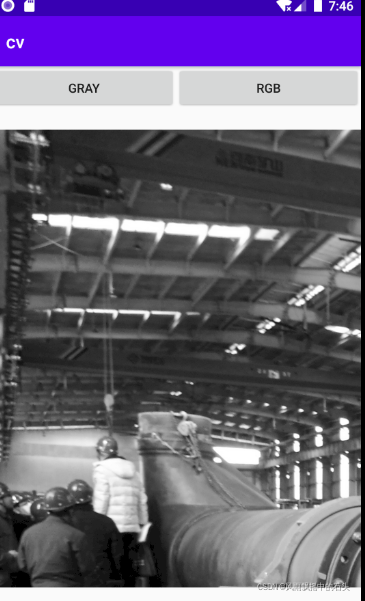_OpenCV-Android教程-不使用 OpenCV Manager 环境搭建
Timeless小帅的博客-CSDN博客 https://blog.csdn.net/qq_18604209/article/details/104033944
<?xml version="1.0" encoding="utf-8"?>
<RelativeLayout xmlns:android="http://schemas.android.com/apk/res/android"
xmlns:app="http://schemas.android.com/apk/res-auto"
xmlns:tools="http://schemas.android.com/tools"
android:layout_width="match_parent"
android:layout_height="match_parent"
tools:context=".MainActivity">
<LinearLayout
xmlns:android="http://schemas.android.com/apk/res/android"
xmlns:app="http://schemas.android.com/apk/res-auto"
xmlns:tools="http://schemas.android.com/tools"
android:layout_width="match_parent"
android:layout_height="match_parent"
android:orientation="vertical"
tools:context="com.example.opencv_practise.MainActivity">
<LinearLayout
android:layout_width="match_parent"
android:layout_height="wrap_content"
android:orientation="horizontal">
<Button
android:layout_weight="1"
android:id = "@+id/btn_process"
android:layout_width="match_parent"
android:layout_height="wrap_content"
android:text="GRAY"/>
<Button
android:layout_weight="1"
android:layout_width="match_parent"
android:layout_height="wrap_content"
android:id="@+id/btn_rgb"
android:text = "RGB"/>
</LinearLayout>
<ImageView
android:id="@+id/im_j20"
android:layout_width="match_parent"
android:layout_height="wrap_content"
app:srcCompat="@drawable/lena" />
</LinearLayout>
</RelativeLayout>
```java
package edu.ydk.cv;
import androidx.appcompat.app.AppCompatActivity;
import android.graphics.Bitmap;
import android.graphics.BitmapFactory;
import android.os.Bundle;
import android.util.Log;
import android.view.View;
import android.widget.Button;
import android.widget.ImageView;
import android.widget.Toast;
import org.opencv.android.BaseLoaderCallback;
import org.opencv.android.LoaderCallbackInterface;
import org.opencv.android.OpenCVLoader;
import org.opencv.android.Utils;
import org.opencv.core.Mat;
import org.opencv.imgproc.Imgproc;
public class MainActivity extends AppCompatActivity {
ImageView iv;
String TAG = new String("test");
private BaseLoaderCallback mLoaderCallback = new BaseLoaderCallback(this) {
@Override
public void onManagerConnected(int status) {
switch (status) {
case LoaderCallbackInterface.SUCCESS: {
Log.i(TAG, "OpenCV loaded successfully");
}
break;
default: {
super.onManagerConnected(status);
}
break;
}
}
};
@Override
protected void onResume() {
super.onResume();
if (!OpenCVLoader.initDebug()) {
Log.d(TAG, "Internal OpenCV library not found. Using OpenCV Manager for initialization");
OpenCVLoader.initAsync(OpenCVLoader.OPENCV_VERSION_3_0_0, this, mLoaderCallback);
} else {
Log.d(TAG, "OpenCV library found inside package. Using it!");
mLoaderCallback.onManagerConnected(LoaderCallbackInterface.SUCCESS);
}
}
@Override
protected void onCreate(Bundle savedInstanceState) {
super.onCreate(savedInstanceState);
setContentView(R.layout.activity_main);
//loadOpenCV();
iv = (ImageView) findViewById(R.id.im_j20);
Button btn_process = (Button)findViewById(R.id.btn_process);
btn_process.setOnClickListener(new View.OnClickListener(){
@Override
public void onClick(View v) {
Togray();
}
});
Button btn_rgb = (Button)findViewById(R.id.btn_rgb);
btn_rgb.setOnClickListener(new View.OnClickListener(){
@Override
public void onClick(View v) {
Torgb();
}
});
}
private void Togray(){
Bitmap bitmap = BitmapFactory.decodeResource(getResources(),R.drawable.lena);
Mat src = new Mat();
Mat dst = new Mat();
Utils.bitmapToMat(bitmap,src);
Imgproc.cvtColor(src,dst,Imgproc.COLOR_BGR2GRAY);
Utils.matToBitmap(dst,bitmap);
iv.setImageBitmap(bitmap);
src.release();
dst.release();
}
private void Torgb(){
Bitmap bitmap = BitmapFactory.decodeResource(getResources(),R.drawable.lena);
iv.setImageBitmap(bitmap);
}
}